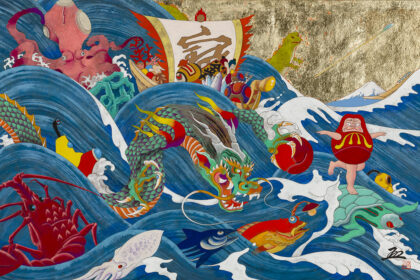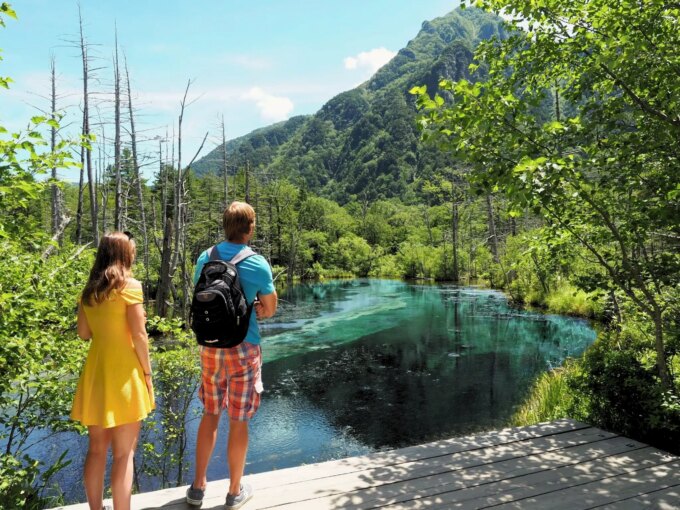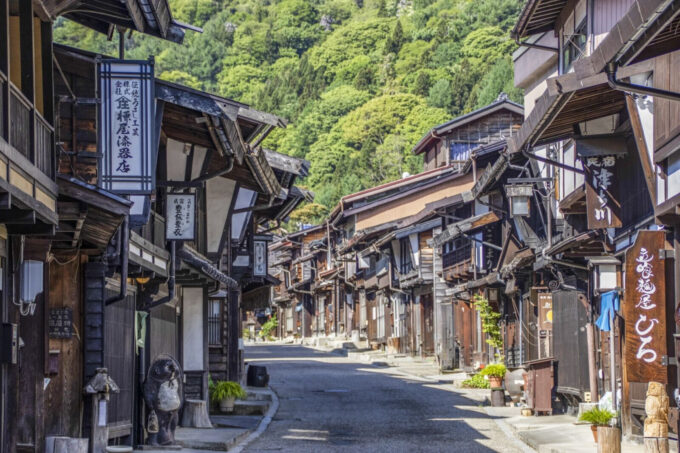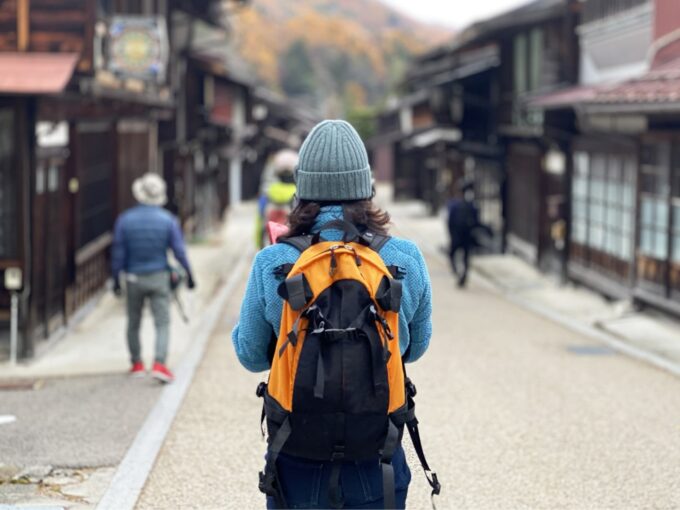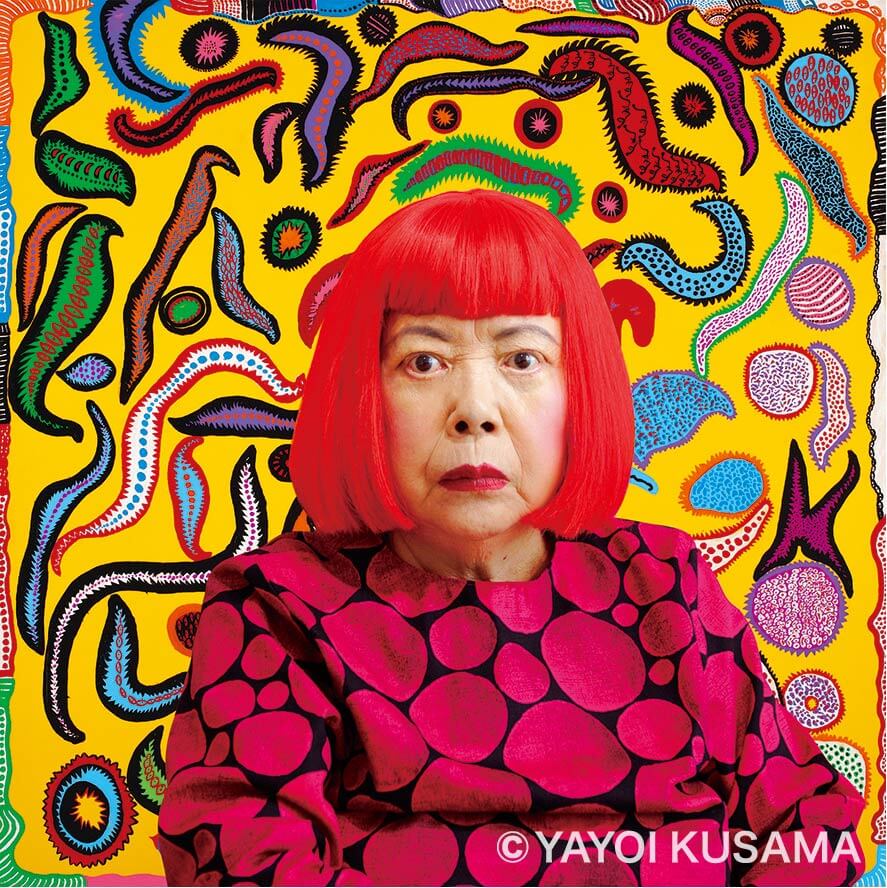
One of the most famous artists in the world today, the art of Kusama Yayoi / 草間 彌生 is instantly recognisable. A prolific artist, Kusama is best-known for her use of polka dots and vibrant colours – seemingly simple designs that exhibit tremendous depth and complexity, along with her revolutionary 'Infinity Mirror Rooms', that reflect an inner-world which from young age has inspired one of the world’s most influential modern artists.
THE LIFE OF KUSAMA YAYOI
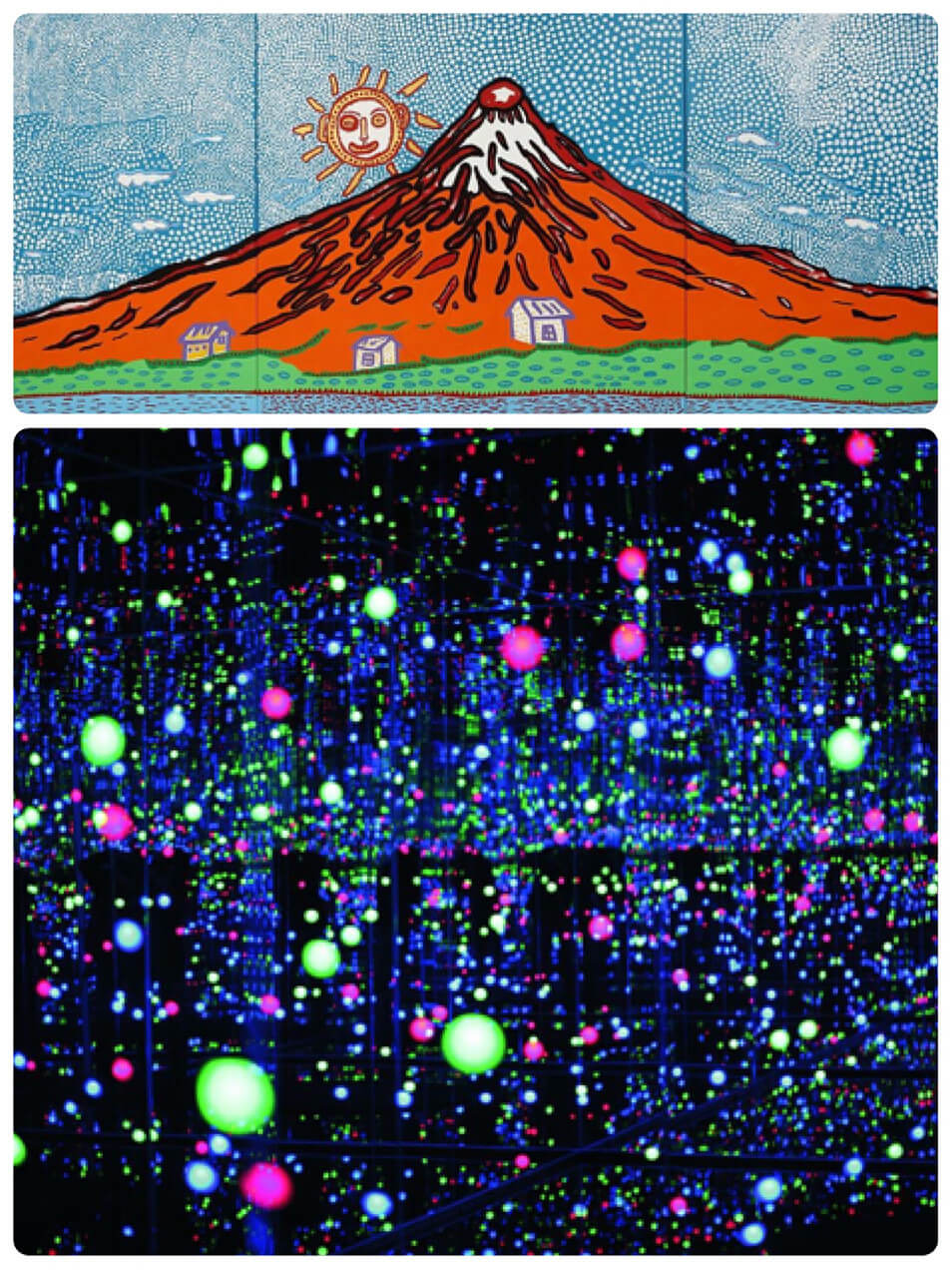
Born to a merchant family in Matsumoto, Nagano in 1929, Kusama experienced a difficult childhood. Her parents were known to have an unhappy marriage, and her mother would send the young Kusama to spy on her father when he was away from home. This unpleasant experience deeply affected her and art was an escape from the unhappy aspects of her home-life. Kusama enjoyed art from a young age, demonstrating unique talent, yet her mother did not support her and would tear her drawings from her hand – an experience that taught her to work feverishly and produce her art quickly.
Even in her earliest drawings, often sketches of plants including pumpkins, many of Kusama’s pictures were covered in the dots that would become a signature as a mature artist. Around the age of 10 she began painting with watercolours and pastels by which time she was also experiencing vivid hallucinations. An experience she has described as ‘flashes of light, auras of dense field so dots’, her hallucinations would extend to the patterns of daily items such as tablecloths spreading across her field of vision to consume her world and obliterate her sense of self.
As a school child living through World War II, Kusama was required to make parachutes, the handling of which introduced her varied and larger materials which she would later incorporate into her work. Art was increasingly an escape from a dark world and following the end of the war, she enrolled at the Kyoto Municipal School of Arts and Crafts to study ‘nihonga’ (traditional Japanese art). Frustrated by the dogmatic and rigid tenets of the school, and increasingly enticed by the freedom of expression of the American avant-garde art movement, Kusama was soon looking toward the West for inspiration.
Looking to the West
Entering adulthood, Kusama began depicting abstract forms in watercolour, oils, and gouache on paper and began covering surfaces – walls, floors, canvases and eventually, naked assistants – with polka dots. In 1957, aged 27, Kusama moved to the United States to work as an artist in New York. Persisting through the challenges to working as a female artist in a foreign country, Kusama entered one of the most influential but testing periods of her creative life, first exhibiting paintings and ‘soft’ sculptures before producing the her now iconic 'Infinity Mirror Rooms’. Varying in size and form, these complex installations utilised mirrors, lighting, glass, and neon to create the illusion of never-ending space - an immersive experience for the viewer and manifestation of her hallucinations.
Despite her experimental creativity and production of a large amount of work, Kusama continued to be overlooked by the art establishment with high-profile male artists including Claes Oldenberg, Lucas Samara, and Andy Warhol apparently influenced by her art to such an extent that they have been accused of plagiarising her work.
Frustration with her continued lack of recognition while others apparently achieved fame through mimicry, Kusama became increasingly isolated between bouts of productivity. Increasingly politically active, Kusama was heavily involved in anti-war demonstrations, staged ‘happenings’ and fashion shows – activities that further alienated her from the establishment.
Disillusion & Return to Japan
A heavy workload increasingly impacted on her health and ultimately led to her return to Japan in 1973. In her early-40s and largely unknown in her homeland, Kusama would effectively have to start again. She continued to produce art shows and wrote novels and anthologies, winning awards and quiet acclaim in both Japan and Europe. As her mental health continued plague her, Kusama checked into a psychiatric hospital in 1977, where she continues to live to this day by choice.
During this time, Kusama very much faded from prominence but continued to work steadily until a revival in interest in her artwork from the mid to late-1980s in which time she held exhibitions in France in 1986 and both the United States and United Kingdom in 1989. It was however her exhibition at the 45th Venice Biennale in 1993 and her profile as the first female artist to hold a solo exhibition at the prestigious event, which finally brought her widespread global recognition.
Critical & Public Acclaim
From that time, Kusama Yayoi has remained in the public eye. From 1994 onward, she began to produce open-air sculptures in both Japan and abroad – mostly of large-scale, polka-dotted pumpkins and flowers set in both man-made and natural landscapes. Numerous international awards and recognition have followed, with major retrospectives of her work in New York, Los Angeles and Tokyo during 1998 and 1999 and countless museums and galleries around the world exhibiting her work.
A critical review of her work will involve discussion of conceptual art flirting with surrealism, minimalism, and pop art and expressing a deeply personal and immersive experience. Yet Kusama Yayoi’s profile as arguably the most recognisable living artist stems in part from her ability to produce work that appeals to a wide audience. Vibrant, immersive and playful, her paintings, installations and sculptures lend themselves perfectly to social media, a channel which has been widely credited for continuing to increase her profile with a new and younger audience.
Her current popularity and the superficial fact that her work looks good on Instagram should not however distract from her importance as a prolific artist whose influence through the 1960s is only now truly being acknowledged. Often mimicked if not plagiarised by higher profile artists through that period, many critics now regard Kusama Yayoi as among the most important artists of the 1960s and certainly, the most enduring. As she continues to work into her 90s, her work has subverted her inner torment to create beautiful work and brings joy and escapism to the viewer and as such, she is loved in both Japan and around the world.
WHERE TO ENJOY HER ARTWORK
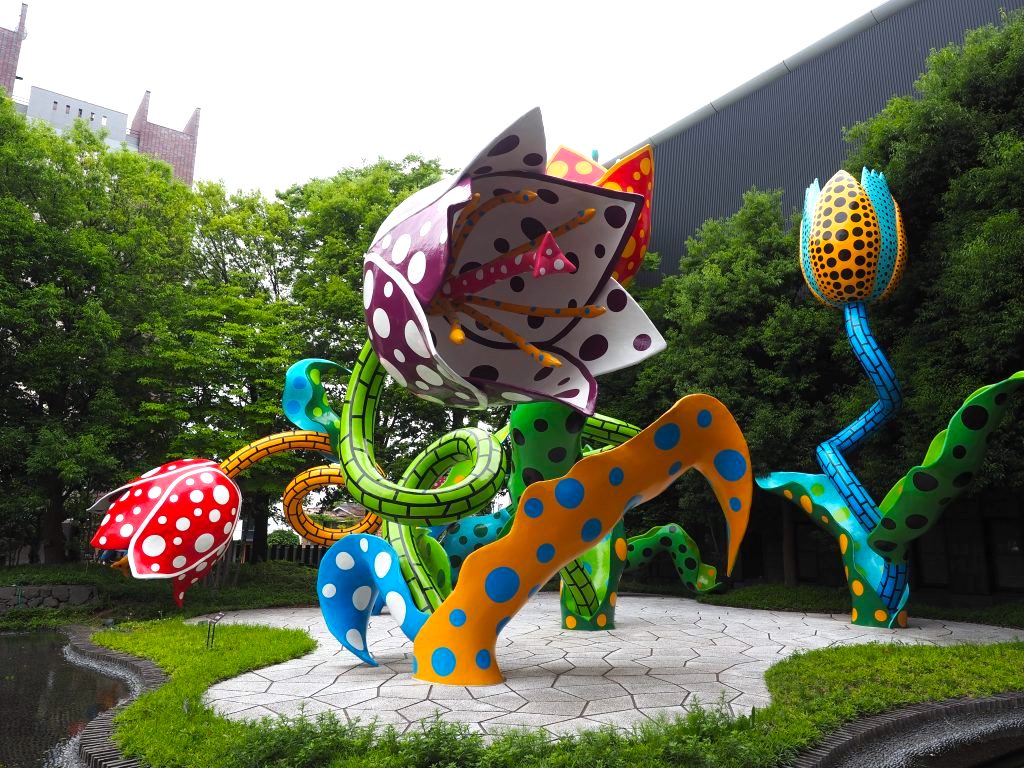
As Japan’s – if not the world’s – most recognisable contemporary artist, you will encounter Kusama Yayoi’s work regularly while here. The list below is by no means exhaustive - with many museums and galleries displaying her paintings, sculptures and installations - however these venues offer some of the best opportunities to enjoy her work:
YAYOI KUSAMA MUSEUM, Tokyo
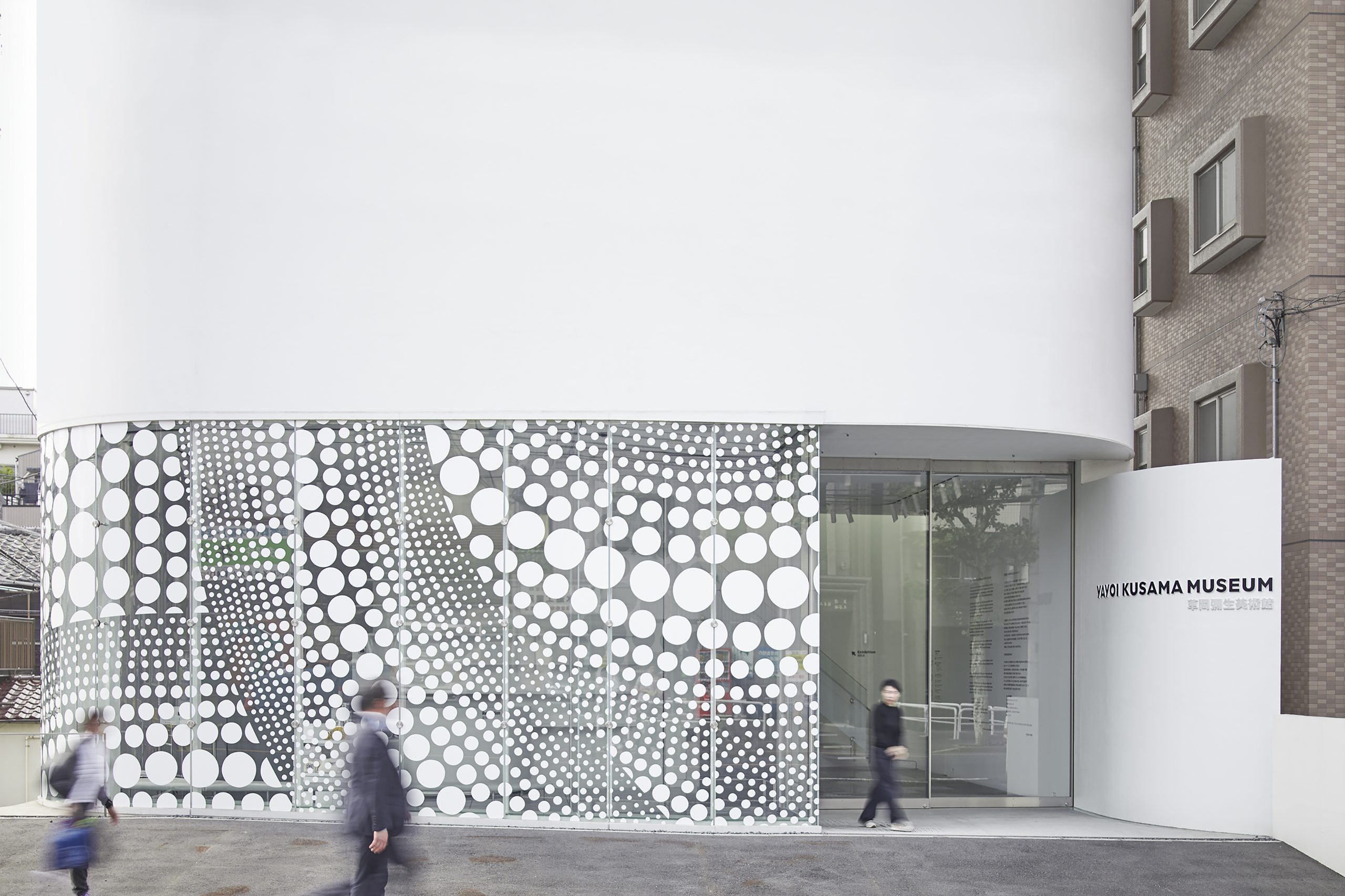
As Japan’s most famous contemporary artist, the avant garde installations, paintings, drawings and overall style of Yayoi Kusama will be recognisable to many international visitors. Bold colours and patterns define her style, with her famous polka dot motif adorning many of her artworks. Located in the Waseda district of Tokyo, the Yayoi Kusama Museum is dedicated to the life and work of Japan's best known contemporary artist. Given its popularity, tickets cannot be purchased at the door and must be purchased in advance through the museum's website. Attendance is limited with entry timed and valid for a designated 90-minute time-slot. As a result, tickets sell-out well in advance, especially on weekends. Typically open 4 to 5 days per week from 11:00 to 17:30, you will be assigned a date and time to visit upon booking a ticket.
MATSUMOTO CITY ART MUSEUM, Nagano

The Matsumoto City Museum of Art exhibits artworks by artists with an association to the city, across both permanent and temporary exhibitions. Most notably, Kusama Yayoi was born and raised in Matsumoto and the museum’s collection of her artwork takes centre stage. Although classically trained, Kusama’s defining style sits is heavily-influenced avant-garde, pop and conceptual art – of which, she is now a celebrated and pioneering artist. For visitors heading to the Yayoi Kusama Museum in Tokyo, and especially those who miss out of tickets for that museum, visiting Matsumoto to experience her artwork in the place of her birth and younger years is well-worth it and an easy trip from Tokyo using the Limited Express Azusa service from Shinjuku Station. The Matsumoto City Art Museum is open daily from 09:30 to 17:00 (last entry at 16:30). Closed on Mondays and over the New Year period.
ECHIGO-TSUMARI ART FIELD, Niigata
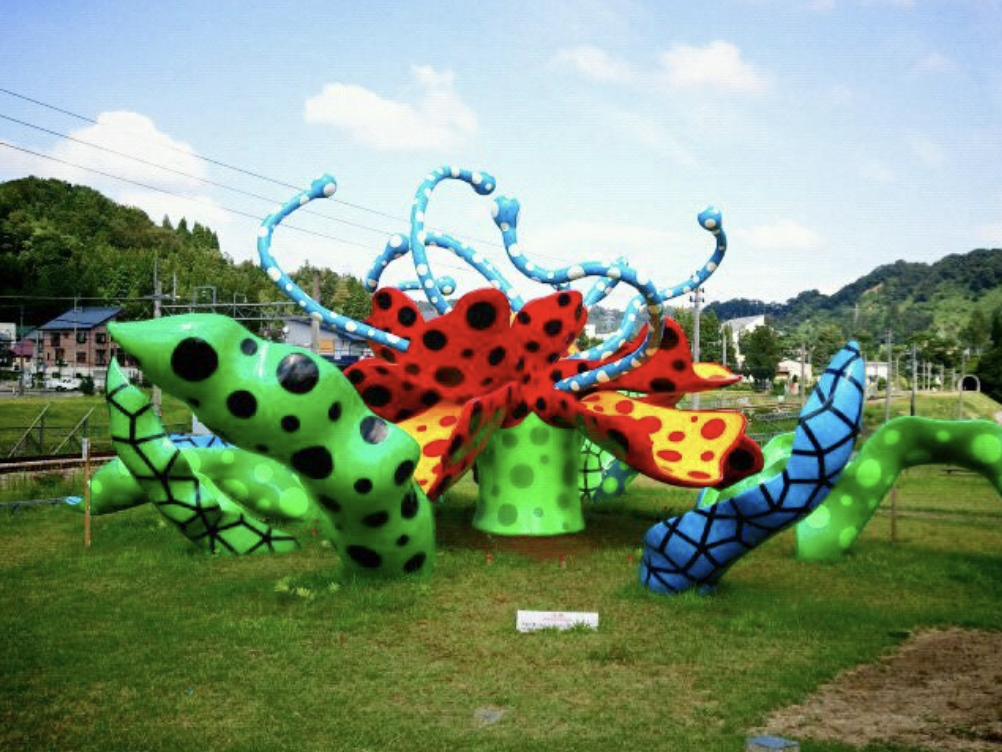
Running since 2000, Echigo-Tsumari Art Field or Echigo-Tsumari Art Triennial (ETAT) officially takes place every three years – with the next large-scale festival planned for summer 2021. ETAT is the predecessor to the well-known Art Setouchi – discussed below - with claims that it is the largest open-air arts festival in the world. Artworks and events occur across a vast region, approximately the size of greater Tokyo – an estimated area of 700km² – involving six municipalities. Installations by major international artists sit in among pristine forests, within rivers or gorges, or among rice fields, farmlands and within traditional farmhouses. Devotees of Kusama Yayoi will want to head to the small mountain enclave of Matsudai where her large installation 'Tsumari in Bloom' sits in front of the Matsudai Nohbutai Center - one of the festivals main hubs and galleries.
NAOSHIMA ISLAND, Kagawa
Perhaps her most photographed artwork, the yellow and black polka dotted pumpkin sitting on Naoshima Island has come to be synonymous with the island itself and the larger, Setouchi Triennale art festival that it was commissioned and installed for. As part of a large and hugely popular festival, the installation is just one of many artworks and artists profiled, but without doubt it is the best-known and one of the main reasons so many people travel to the island each year.
TOWADA ART CENTER, Aomori
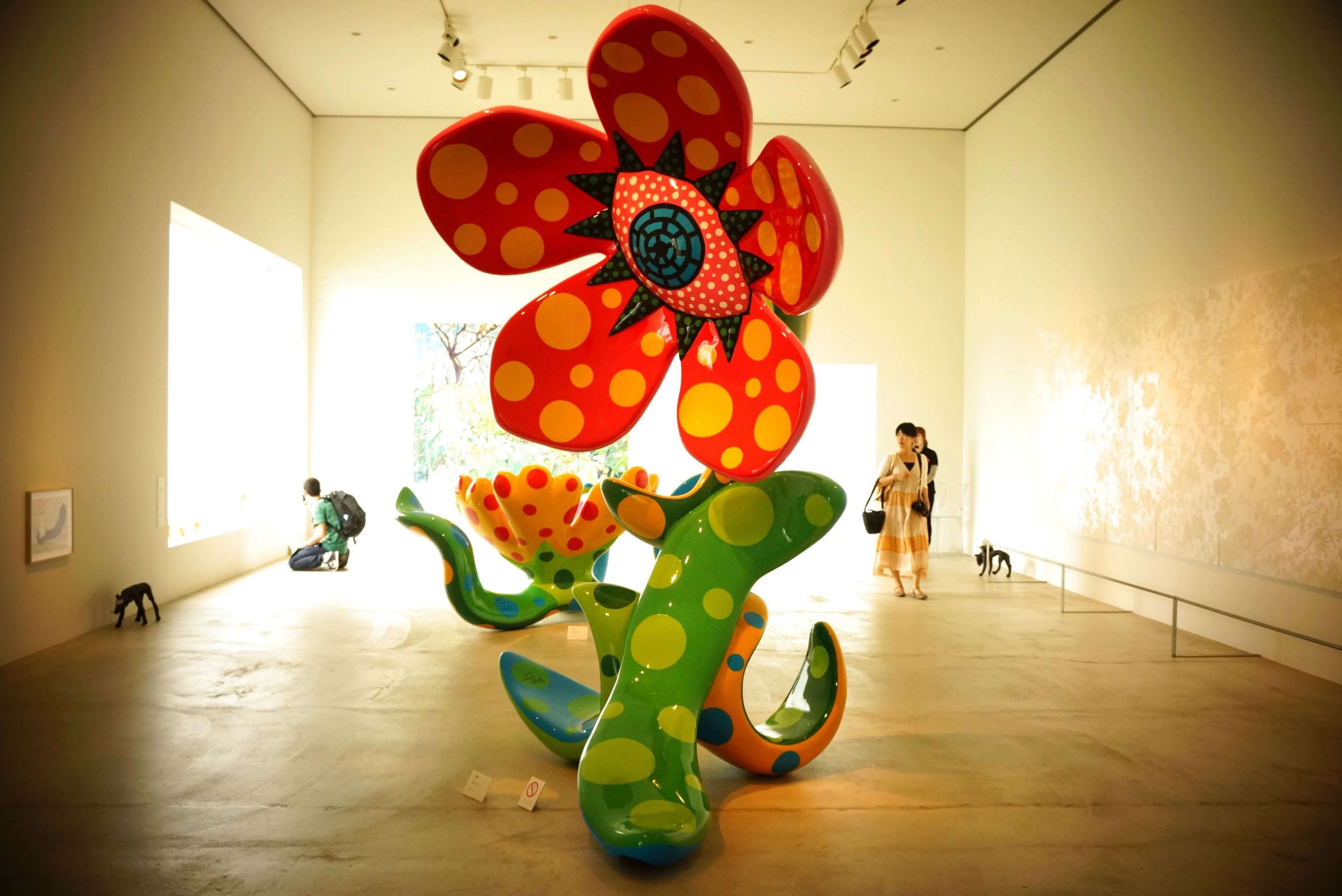
For visitors heading to the very north of Honshu (the largest of Japan’s main islands), the Towada Art Center is a contemporary art museum located in Towada City, Aomori Prefecture. Exhibiting artwork and installations by many high-profile contemporary artists, Kusama Yayoi’s work is a notable including a playful outdoor area adorned by multiple sculptures by Kusama. It's a long way from Tokyo but if you’re headed that way, it is well worth visiting. Open daily from 09:00 to 17:00 with last entry at 16:30. Closed on Mondays.
TOURS AND CHARTERS AROUND MATSUMOTO
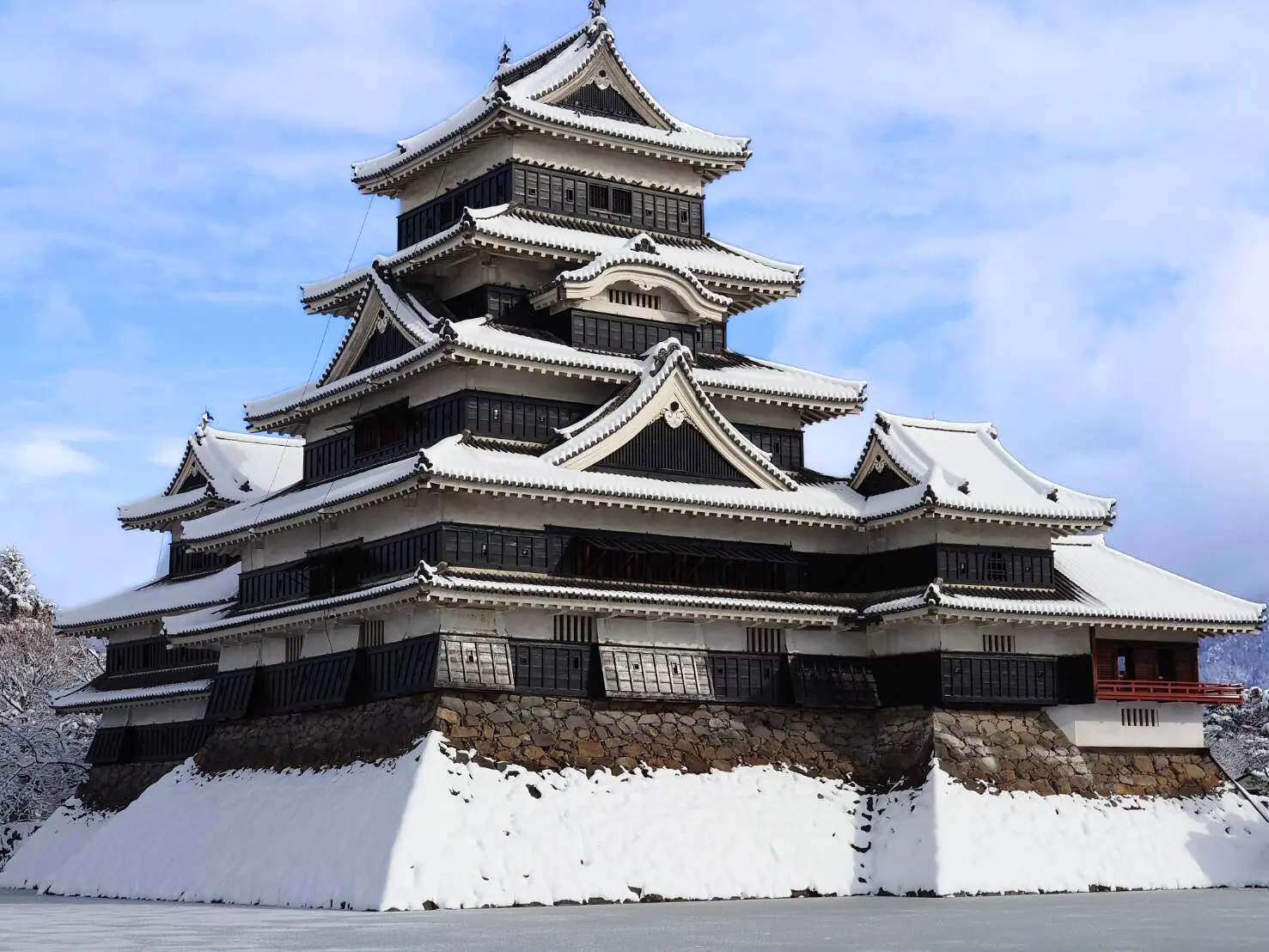
If you have come to Matsumoto, the place of Kusama Yayoi's birth, and are looking for more activities before or after visiting the city art museum, you need look no further than our tours starting from the area. With group tours, private tours, and private charters on offer, we are confident you will find something that suits your needs.
Popular
1-Day Tour from Nagano and Matsumoto: Kamikochi & Matsumoto Castle
- Spots:
- NaganoMatsumotoKamikochi
- Pick-up:
- Nagano CityMatsumoto
- Drop-off:
- Nagano CityMatsumoto
Defined by its mountains and natural landscapes, Central Japan is the literal heartland of this beautiful country and a road less travelled by many international visitors. This engaging one-day tour takes you to Matsumoto Castle – one of the few remaining original castles in Japan and a registered National Treasure – before heading high into the grandeur of the North Alps and onto the protected alpine oasis of Kamikochi. Led by a locally-based guide and including direct transport to and from Kamikochi, this tour captures the essence of Central Japan by combining two of its most iconic destinations.
Recommended
1-Day Tour from Nagano and Matsumoto: Experience Matsumoto Castle and Narai-juku
- Spots:
- NaganoMatsumotoKiso Valley
- Pick-up:
- Nagano CityMatsumoto
- Drop-off:
- Nagano CityMatsumoto
This engaging tour combines Matsumoto's biggest draw - Matsumoto Castle - with an excursion to the beautifully preserved, 1-km long post town known as Narai-juku, located on the Nakasendo road. Led by a locally-based guide and including direct transport to Narai-juku from Matsumoto and Nagano, this tour captures the essence of Old Japan at two of its best preserved historical sites.
Recommended
1-Day Tour from Nagano and Matsumoto: Step into the Past on the Nakasendo
- Spots:
- NaganoMatsumotoKiso Valley
- Pick-up:
- Nagano CityMatsumoto
- Drop-off:
- Nagano CityMatsumoto
Stretch your legs and breathe in fresh mountain air on the Nakasendo Trail in this unforgettable tour. Starting from Matsumoto City, our private tour bus will take you to the romantic post town of Tsumago, with a stop at a fascinating Japanese Michi-no-Eki (Road-side Service Area) along the way to purchase refreshments in preparation for the trail. After exploring the town of Tsumago with your guide, the 8-km scenic walk from Tsumago to Magome will begin, taking you through small towns and forested mountains on a road that in many areas retains its original cobblestone paving. Taking around 3 hours in total, this journey will make your arrival at the next post town of Magome all the more rewarding. In Magome, you will have the chance to shop for local crafts and souvenirs, before boarding our tour bus to return to Matsumoto. This tour will reward those who like to take the road less traveled and enjoy a more hands (or feet!) on experience in the heartland of Japan.

For a more personalized experience, private charters are also available. We can pick you up from a location of your choice anywhere in Central Japan, and bring you to your preferred destination. Airport pickup from Tokyo or Nagoya, even Osaka, is also possible. Our services may be used for taking day trips that include a few hard to reach destinations as well, removing the hassle of using often infrequent public transport options. A guide can be requested for an additional fee to turn the day into a completely private tour, where you decide the itinerary and our guides show you around in a timely and engaging manner. For more information concerning pricing and availability, please see here.














